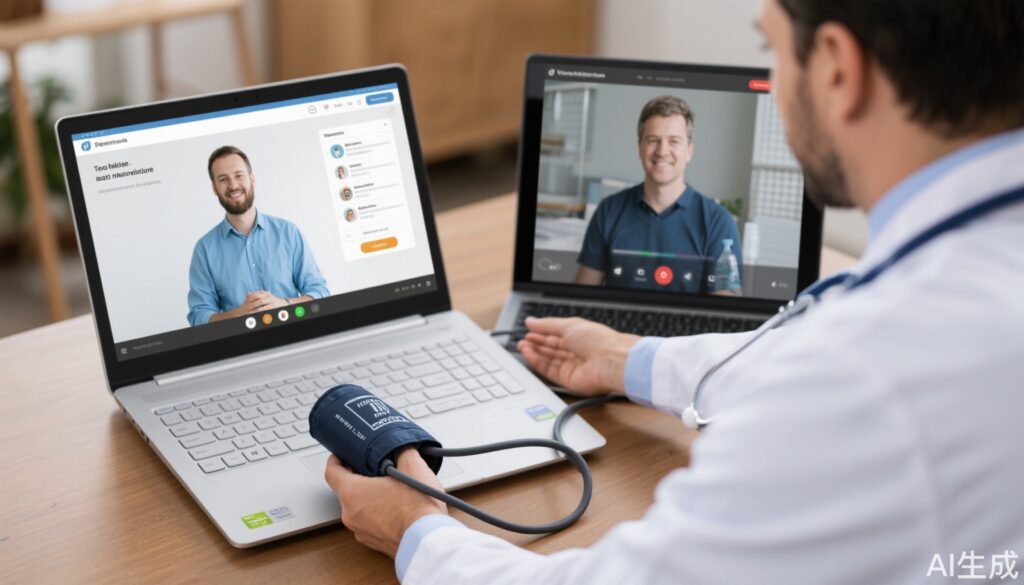Study Background and Disease Burden
Hypertension represents a significant global health challenge, affecting approximately 1.4 billion adults worldwide, according to the World Health Organization. This chronic disease is a prominent risk factor for cardiovascular events, such as heart attacks and strokes, representing a considerable burden on healthcare systems. Regular blood pressure (BP) monitoring is a crucial aspect of hypertension management, enabling timely interventions and adjustments in therapy. The advent of digital health technologies, particularly remote monitoring, offers a promising avenue for enhancing patient adherence and engagement. Nonetheless, the long-term efficacy of remote versus traditional monitoring approaches in blood pressure control necessitates more rigorous evaluation. This study aims to validate whether remote monitoring coupled with guidance can significantly improve BP outcomes compared to usual care or self-monitoring alone.
Study Design
This multicentre randomized controlled trial was conducted in Qingdao, China, from December 2020 to December 2021. The study enrolled 1006 participants diagnosed with primary hypertension, randomly assigned to one of three groups: remote monitoring, self-monitoring, or usual care. Each participant underwent outpatient follow-up visits at three-month intervals throughout a 24-month study period. The primary endpoint was the adjusted mean difference in systolic blood pressure, which served to evaluate the effectiveness of interventions.
Key Findings
The final analysis included 332 participants in the usual care group, 337 in the self-monitoring group, and 337 in the remote monitoring group. Notably, systolic BP decreased significantly across all groups, but the remote monitoring group exhibited the most substantial reductions—17.7 mm Hg in systolic BP and 10.2 mm Hg in diastolic BP—particularly among patients with suboptimal baseline levels.
Comparative results showed that the adjusted mean difference in systolic BP for the remote monitoring group was -2.7 mm Hg (95% CI: -4.45 to -0.96), with p = 0.002, indicating significant superiority over the usual care group. Conversely, the self-monitoring group did not demonstrate a statistically significant difference compared to the usual care cohort. Additionally, no significant differences were noted in diastolic BP outcomes between any of the intervention groups.
Target BP attainment rates soared in the initial three months and continued to progress within the remote group, culminating at 69.65%. Furthermore, participants in the remote group were more likely to receive calcium channel blockers, diuretics, and combination therapy compared to their counterparts in the usual care and self-monitoring groups.
Expert Commentary
Remote monitoring and guidance hold significant promise for optimizing hypertension management. This study’s findings align with existing literature highlighting the positive effects of telehealth interventions on medication adherence and BP control. The observed improvements in systolic BP among the remote monitoring cohort underscore the importance of continuous engagement and tailored treatment strategies, particularly for patients with poorly controlled hypertension.
However, limitations include the study’s single geographic location, which may affect generalizability to diverse populations. Future research should explore long-term outcomes, cost-effectiveness, and the integration of such interventions in routine clinical practice. As healthcare transitions toward increasingly digital solutions, the evidence supporting remote monitoring will be pivotal in adapting treatment approaches effectively.
Conclusion
In conclusion, the trial reinforces the efficacy of remote monitoring and guidance in improving blood pressure management among hypertensive patients, significantly outperforming self-monitoring and usual care approaches. This has critical implications for clinical practice, emphasizing the need for healthcare systems to embrace digital health interventions that leverage continuous monitoring and patient engagement. More comprehensive studies are warranted to explore the broader applicability and sustainability of these innovative strategies in long-term hypertension management efforts.


